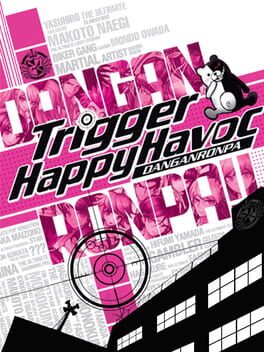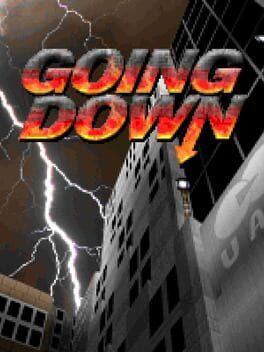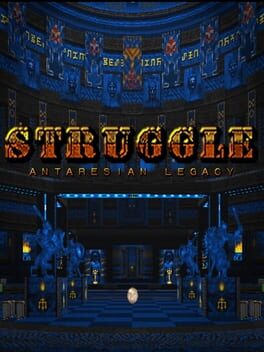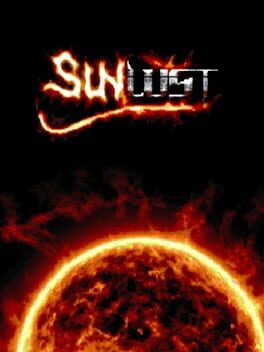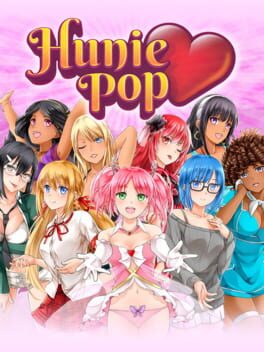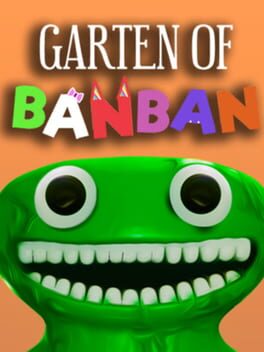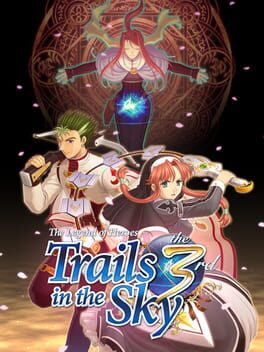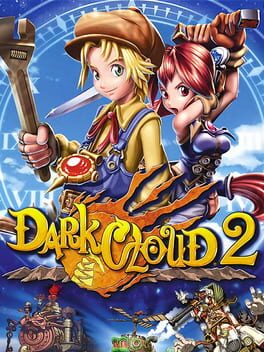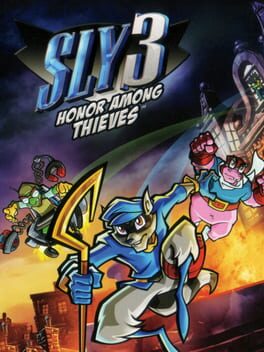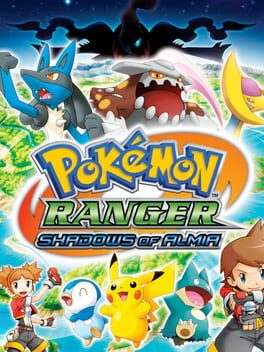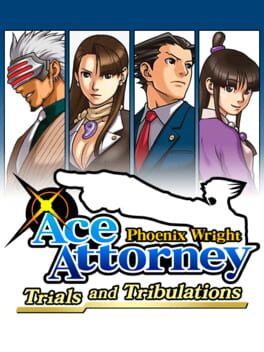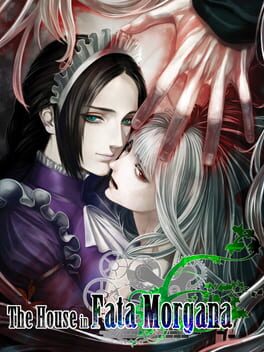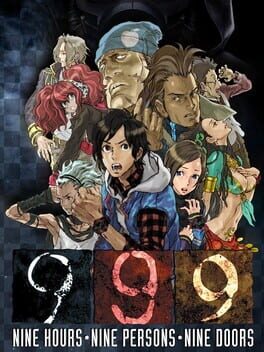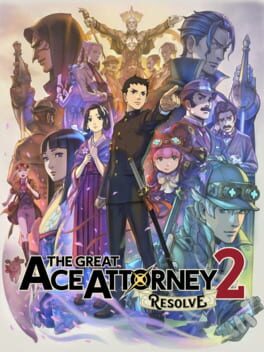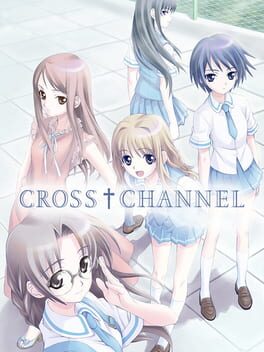39 reviews liked by JCOdyssey
Super Mario RPG
2023
That Geno guy is honestly really cool they should put him in smash
I spent middle and high school surrounded by Danganronpa fans, during the peak of its popularity. I played and loved Zero Escape. And yet, somehow, I managed to completely avoid this game, almost all spoilers, and the apparently radioactive fandom this has apparently spawned.
I'm so glad I did.
Going through this blind, without any outside biases clouding my judgement, was a phenomenal experience. Even the things I did know through osmosis were obscured enough within the actual plot that even finding out how said things would be revealed was still great. It also made all the deaths hit that much harder.
The gameplay is great, like a more active, dynamic version of Ace Attorney, oozing with style and personality. All the mysteries were a blast to piece together, and none were so out-there to make a reveal feel bullshit. And, I must admit, while I was never crazy about the art style from what I'd seen online, I was very surprised how good it looks in game. Stills really don't do it justice.
If your only exposure to this game is from people saying "cringe" and nothing else, I highly implore you to try it for yourself, removed from all that. I'm very happy I gave this a shot as an adult without bias, because it really is something else.
I'm so glad I did.
Going through this blind, without any outside biases clouding my judgement, was a phenomenal experience. Even the things I did know through osmosis were obscured enough within the actual plot that even finding out how said things would be revealed was still great. It also made all the deaths hit that much harder.
The gameplay is great, like a more active, dynamic version of Ace Attorney, oozing with style and personality. All the mysteries were a blast to piece together, and none were so out-there to make a reveal feel bullshit. And, I must admit, while I was never crazy about the art style from what I'd seen online, I was very surprised how good it looks in game. Stills really don't do it justice.
If your only exposure to this game is from people saying "cringe" and nothing else, I highly implore you to try it for yourself, removed from all that. I'm very happy I gave this a shot as an adult without bias, because it really is something else.
Going Down
2014
This stupendous megawad has very rightly been hailed as some of the best that Doom modding has to offer. Attention
is often drawn to its brisk pacing, snappy combat, witty humor, phenomenal use of Doom 2's stock textures, palpable atmosphere, and its singular vision as a one-man creative project. But I want to point out something else that Going Down does very well, which is its difficulty. Doom aficionados who play exclusively on ultra-violence will often point to this as one of Doom's most difficult offerings, but those who cower at that warning (such as myself), fear not. While ultra-violent is the bread and butter of most seasoned Doom players, the lower difficulty settings in Going Down are just as well-balanced. What has the reputation of being notoriously difficult is, in fact, more accessible than you might think. Either way, Doom casuals shouldn't let Going Down's difficult reputation and penchant for "slaughter maps" (somewhat debatable) put them off. This is a brilliant work of horror comedy fun that no FPS fan should miss.
is often drawn to its brisk pacing, snappy combat, witty humor, phenomenal use of Doom 2's stock textures, palpable atmosphere, and its singular vision as a one-man creative project. But I want to point out something else that Going Down does very well, which is its difficulty. Doom aficionados who play exclusively on ultra-violence will often point to this as one of Doom's most difficult offerings, but those who cower at that warning (such as myself), fear not. While ultra-violent is the bread and butter of most seasoned Doom players, the lower difficulty settings in Going Down are just as well-balanced. What has the reputation of being notoriously difficult is, in fact, more accessible than you might think. Either way, Doom casuals shouldn't let Going Down's difficult reputation and penchant for "slaughter maps" (somewhat debatable) put them off. This is a brilliant work of horror comedy fun that no FPS fan should miss.
Although it isn't perfect, Struggle is one of the most significant and impactful Doom megawads ever crafted. Antares is in many ways a mapmaker in a category of his own, as every level here sports astounding attention to detail. There are a lot of reasons for this. Every map has a palpable atmosphere that feels tangible and lived-in. Though the settings are fantastical, they feel real, and that isn’t an easy feat in classic Doom. On top of that, Antares' liberal use of one-way doors allows sections of each map to link together surprisingly naturally. If you're ever looking to backtrack, Antares has your back.
But where Struggle really shines, of course, is the combat. The megawad's beefed up weapon set features a replacement for every weapon, with the sole exception of the super shotgun (you can't improve perfection). These new weapons are on the whole much more dangerous than the old arsenal, particularly the guns akimbo, a lightning fast chaingun replacement that stunlocks most enemies. The grenade launcher, which fittingly replaces the rocket launcher, isn't quite as good at crowd control as its predecessor, though the absolutely meteoric Leichenfaust, the BFG9000 replacement, more than makes up for this. Also, the melee weapon being a hammer is a very cool nod to Oldboy, a favorite film of both Antares and myself.
Antares throws in a few custom monsters and provides some well-rounded buffs to the returning bestiary, making seemingly familiar encounters more dangerous than players might expect. Combat encounters don't particularly lean into slaughter-esque high monster counts until the end, though don't take that to mean that this game is easy. Antares' masterfully unique flavor of classic Doom combat is delightfully strategic, with arenas and monster placement rewarding quick thinking and mastery of your new arsenal.
I would highly recommend playing Struggle with a pistol start each map. Antares practically litters the floor with ammo, so you'll never be short on that. Each map's pacing of finding its weapons is deliberate and progressively brisk. Each instance of finding the Leichenfaust feels like an event unto itself.
Unfortunately, Struggle isn't perfect. While it is doubtlessly a gorgeous game to look at, these environments tend to blend together. Most Struggle maps can be sorted into one of two visual categories: techbase or primary color demon domain. The latter category is almost entirely blue, though there is at least one red map and one green map. Again, it's not that the maps look bad, just that many of them look the same. This monotony is a difficult issue to completely ignore; especially early on, where techbases reign supreme. That so many of the levels look so similar visually feels like a disservice to the undeniable love and care that each one was crafted with.
There's also the final boss, which is unsurprisingly also a disappointment. Classic Doom megawads have been known to fumble the bag at the last moment, but Struggle's final map is a rather egregious case. Thankfully, this is mostly made up for by a legendary preceding duology of maps. Map30 notwithstanding, Antares doesn't seem to know how to make a bad map, but maps 28 and 29 are on another level entirely.
I apologize if this review seems overly long, but I suppose, in a way, I'm just astonished by how much a Doom megawad can make me feel. Struggle is perfectly named not just for its difficulty, but also for its creation. Playing through this game, you can't help but stop and admire how tirelessly Antares must have worked to make everything fit so perfectly. The effort that this one-man project evidently took is equal parts overwhelming and inspiring. I'm beyond grateful not just for Antares, but also for all the modders and coders who came before him, who laid the groundwork for this masterpiece.
Struggle is the story of one man pursuing what is clearly his passion, endeavoring to create a Doom megawad that is fast-paced, carefully rebalanced, and immaculately detailed both visually and in terms of its progression. While there are a few issues here and there, namely the monotony of the environments and the disappointing final boss, I think there's no doubt that Antares succeeded in his goal.
But where Struggle really shines, of course, is the combat. The megawad's beefed up weapon set features a replacement for every weapon, with the sole exception of the super shotgun (you can't improve perfection). These new weapons are on the whole much more dangerous than the old arsenal, particularly the guns akimbo, a lightning fast chaingun replacement that stunlocks most enemies. The grenade launcher, which fittingly replaces the rocket launcher, isn't quite as good at crowd control as its predecessor, though the absolutely meteoric Leichenfaust, the BFG9000 replacement, more than makes up for this. Also, the melee weapon being a hammer is a very cool nod to Oldboy, a favorite film of both Antares and myself.
Antares throws in a few custom monsters and provides some well-rounded buffs to the returning bestiary, making seemingly familiar encounters more dangerous than players might expect. Combat encounters don't particularly lean into slaughter-esque high monster counts until the end, though don't take that to mean that this game is easy. Antares' masterfully unique flavor of classic Doom combat is delightfully strategic, with arenas and monster placement rewarding quick thinking and mastery of your new arsenal.
I would highly recommend playing Struggle with a pistol start each map. Antares practically litters the floor with ammo, so you'll never be short on that. Each map's pacing of finding its weapons is deliberate and progressively brisk. Each instance of finding the Leichenfaust feels like an event unto itself.
Unfortunately, Struggle isn't perfect. While it is doubtlessly a gorgeous game to look at, these environments tend to blend together. Most Struggle maps can be sorted into one of two visual categories: techbase or primary color demon domain. The latter category is almost entirely blue, though there is at least one red map and one green map. Again, it's not that the maps look bad, just that many of them look the same. This monotony is a difficult issue to completely ignore; especially early on, where techbases reign supreme. That so many of the levels look so similar visually feels like a disservice to the undeniable love and care that each one was crafted with.
There's also the final boss, which is unsurprisingly also a disappointment. Classic Doom megawads have been known to fumble the bag at the last moment, but Struggle's final map is a rather egregious case. Thankfully, this is mostly made up for by a legendary preceding duology of maps. Map30 notwithstanding, Antares doesn't seem to know how to make a bad map, but maps 28 and 29 are on another level entirely.
I apologize if this review seems overly long, but I suppose, in a way, I'm just astonished by how much a Doom megawad can make me feel. Struggle is perfectly named not just for its difficulty, but also for its creation. Playing through this game, you can't help but stop and admire how tirelessly Antares must have worked to make everything fit so perfectly. The effort that this one-man project evidently took is equal parts overwhelming and inspiring. I'm beyond grateful not just for Antares, but also for all the modders and coders who came before him, who laid the groundwork for this masterpiece.
Struggle is the story of one man pursuing what is clearly his passion, endeavoring to create a Doom megawad that is fast-paced, carefully rebalanced, and immaculately detailed both visually and in terms of its progression. While there are a few issues here and there, namely the monotony of the environments and the disappointing final boss, I think there's no doubt that Antares succeeded in his goal.
Sunlust
2015
One of the most endearing aspects of Doom mapping is how distinct and unique the maps have become over time. While mods that provide an extensive overhaul to Doom's aesthetic have always existed, like 1994's Aliens TC, it wasn't until some years later that this practice became commonplace. One look at the most noteworthy and influential megawads of the 2010s is all you need to confirm this. Ancient Aliens, Eviternity, and Back to Saturn X are just three examples of blockbuster megawads with not just their own unique texturing, but also well-defined gameplay loops. Of course, the uniqueness of different Doom maps extends not just to their visuals, but also their feel, what it's like to play it. Oftentimes these aspects compliment each other directly. A good Doom map, then, is one that establishes its own unique identity both on a surface level as well as a deeper one.
This is something Sunlust accomplishes in spades. Sunlust looks nothing like typical Doom, and it feels nothing like typical Doom, either. But somehow, to me, Sunlust IS Doom. It is Doom because it is the megawad that most embodies the definition of the word. The name of the game with Sunlust is awe-inspiring. You stand in awe of the grand architecture. The dazzling environments. And, of course, the epic fights. A recurring motif in Sunlust is that it will start a fight with every enemy facing away from you, unalerted to your presence. With the initiative on you to begin the fight, you're free to take a moment both to admire the precise combat geometry as well as to wonder how the hell you're going to make it out of this alive.
And like I've said with many of my other Doom reviews, don't be put off by the legends of this megawad's difficulty. Don't feel like you have to play on ultra-violence. I sure didn't, and I still loved it! I promise the lower difficulties are much more manageable.
Sunlust, I like to imagine, is Doom in its purest, most distilled form. It is the height of the idea of Doom as a "combat puzzle" game, where each encounter takes careful thought, deliberate preparation, and precise execution in order to best. It is a perfect marriage of visual aesthetics and gameplay style. It is, simply, a work of art.
This is something Sunlust accomplishes in spades. Sunlust looks nothing like typical Doom, and it feels nothing like typical Doom, either. But somehow, to me, Sunlust IS Doom. It is Doom because it is the megawad that most embodies the definition of the word. The name of the game with Sunlust is awe-inspiring. You stand in awe of the grand architecture. The dazzling environments. And, of course, the epic fights. A recurring motif in Sunlust is that it will start a fight with every enemy facing away from you, unalerted to your presence. With the initiative on you to begin the fight, you're free to take a moment both to admire the precise combat geometry as well as to wonder how the hell you're going to make it out of this alive.
And like I've said with many of my other Doom reviews, don't be put off by the legends of this megawad's difficulty. Don't feel like you have to play on ultra-violence. I sure didn't, and I still loved it! I promise the lower difficulties are much more manageable.
Sunlust, I like to imagine, is Doom in its purest, most distilled form. It is the height of the idea of Doom as a "combat puzzle" game, where each encounter takes careful thought, deliberate preparation, and precise execution in order to best. It is a perfect marriage of visual aesthetics and gameplay style. It is, simply, a work of art.
HuniePop
2015
I am what many would consider a cock-loving homosexual. Ergo, many of my close friends were were initially confused when they saw me playing this game. It makes sense, none of these women do anything for me in the ways intended.
However, let me ask you this: Have you ever taken a human life? For most, I assume the answer is no. In fact, the very idea of it is absolutely revolting. And yet, you've likely spent hundreds, if not thousands, of hours doing just that in the context of a video game. Can the same not be done for dating women, even if I myself have only and likely will only ever date men? I think so.
Anyway, while the terms "dating sim" and "visual novel" are often used interchangeably within English-speaking audiences, I feel HuniePop is a prime example of how the former can exist without the latter. Much of the actual dialog is just surface-level smalltalk with the girls, with the occasional pep-talk/racist remark from your rizz fairy companion. If you're looking for a complex story, character development, worldbuilding, etc., you're in the wrong timezone, like how did you even think this was the place to find that?
The writing itself is fine, for the most part. Each girl definitely feels distinct enough to where you won't mix them up, at the very least, although I do admit I would have liked a bit more interactions between the girls. The aforementioned rizz fairy, Kyu, is who you'll end up getting to know the most, since she's the mascot/companion, which is somewhat unfortunate considering a lot of her dialog sounds like an edgy high schooler in the mid-2010s. It's not awful, but as someone who was an edgy high schooler in the 2010s, it takes me back to a time I'm more than happy to forget.
Speaking of, there's an undeniable dash of 2010s racist humor that, while not abhorrent or even seemingly coming from a place of hate, definitely caught me off guard. Stuff like Kyu referring to "yellow fever" and "chocolate" when you first encounter the Japanese and black girls, along with the Latina and Japanese girls's "unique gifts" being things like a sombrero and samurai helmet, respectively. (Word of advise: If you value your life and wellbeing, do NOT, under ANY CIRCUMSTANCES, give an athletic Latina you just met maracas). They're at least self-aware enough to have the Japanese girl acknowledge it, but yeah, definitely worth noting.
The gameplay is where it really gets interesting, though. The combination of Match-3 puzzles, time management, etc. is actually really engaging, and is why I actually saw this game through to the end. I'm just a sucker for these kinda games, I guess. While I personally found myself playing as an emotionless sociopath, purely seeking the optimal outcome of each encounter, I could definitely see how someone might be able to enjoy this game casually. While the endgame may be a bit of a slog and a grind, made even worse by the menus used to track things not being easily cycled through, I doubt many interested in this game are seeking 100%, so I guess it's a more personal complaint.
Overall, I enjoyed the game for what it was. I'm sure actually being attracted to the girls would elevate the experience, but it's not as critical as it seems.
However, let me ask you this: Have you ever taken a human life? For most, I assume the answer is no. In fact, the very idea of it is absolutely revolting. And yet, you've likely spent hundreds, if not thousands, of hours doing just that in the context of a video game. Can the same not be done for dating women, even if I myself have only and likely will only ever date men? I think so.
Anyway, while the terms "dating sim" and "visual novel" are often used interchangeably within English-speaking audiences, I feel HuniePop is a prime example of how the former can exist without the latter. Much of the actual dialog is just surface-level smalltalk with the girls, with the occasional pep-talk/racist remark from your rizz fairy companion. If you're looking for a complex story, character development, worldbuilding, etc., you're in the wrong timezone, like how did you even think this was the place to find that?
The writing itself is fine, for the most part. Each girl definitely feels distinct enough to where you won't mix them up, at the very least, although I do admit I would have liked a bit more interactions between the girls. The aforementioned rizz fairy, Kyu, is who you'll end up getting to know the most, since she's the mascot/companion, which is somewhat unfortunate considering a lot of her dialog sounds like an edgy high schooler in the mid-2010s. It's not awful, but as someone who was an edgy high schooler in the 2010s, it takes me back to a time I'm more than happy to forget.
Speaking of, there's an undeniable dash of 2010s racist humor that, while not abhorrent or even seemingly coming from a place of hate, definitely caught me off guard. Stuff like Kyu referring to "yellow fever" and "chocolate" when you first encounter the Japanese and black girls, along with the Latina and Japanese girls's "unique gifts" being things like a sombrero and samurai helmet, respectively. (Word of advise: If you value your life and wellbeing, do NOT, under ANY CIRCUMSTANCES, give an athletic Latina you just met maracas). They're at least self-aware enough to have the Japanese girl acknowledge it, but yeah, definitely worth noting.
The gameplay is where it really gets interesting, though. The combination of Match-3 puzzles, time management, etc. is actually really engaging, and is why I actually saw this game through to the end. I'm just a sucker for these kinda games, I guess. While I personally found myself playing as an emotionless sociopath, purely seeking the optimal outcome of each encounter, I could definitely see how someone might be able to enjoy this game casually. While the endgame may be a bit of a slog and a grind, made even worse by the menus used to track things not being easily cycled through, I doubt many interested in this game are seeking 100%, so I guess it's a more personal complaint.
Overall, I enjoyed the game for what it was. I'm sure actually being attracted to the girls would elevate the experience, but it's not as critical as it seems.
Live A Live
2022
This is coming from a very western perspective, but the SNES era of RPGs is firmly cemented in my brain as this near mythical explosion of classic game after classic game, almost all of which coming from Square. That myth has stayed relatively the same even as an adult now who absolutely did not grow up with them, with many of the highlights of the generation staying relatively the same. I had certainly heard of Live a Live before the remake's annoucement, but my knowledge essentially went to name alone, and the general praise I had heard for it. And to be frank, this game is earth-shattering. This is like finding out another Chrono-Trigger tier game existed with the big boys all along, and everyone who has played this finding that out, myself included, finding that out as they go along this excellent adventure, its so heartwarming. Who knows what other great gems are ready for a revival this good again.
Garten of Banban
2023
There are several words I wish I could say about this game. Many of which I will unfortunately be unable to say without threat of legal action, but I shall try my best.
Speaking from my own experience as a hobbyist and aspiring game developer, Garten of Banban feels much like the kind of projects you throw together when you're just getting your feet wet with a new engine, style, or just game development in general. The kind of unpolished, unoptimized mess of various mechanics jammed into each other that you know isn't anywhere close to a finished product, but still feel proud of just on the basis of getting it working at all. The kind that will never see the light of day, aside from maybe a few friends you send it to being like "Check this out, first time doing this, can't believe it actually works.", knowing full well future attempts will start from scratch now that you know what you're doing. And yet, here it is, published, with a merch link on the main menu.
I was fortunate, having the foresight to enlist a dear friend who shares whatever deep-rooted trauma or mental illness draws me to this style of game. Were it not for their company, I likely would have been driven to my breaking point, and for that, I am thankful. I don't often outwardly express frustration in a non-joking manner, so the fact that I let out an involuntary cry of pure rage at one point goes to show this game's ability to get into your head. In a way, it's almost impressive, given the length and quality.
Graphically, this game looks worse than one made in Roblox. And I'm not talking about the Roblox of today, where there's somehow actual money behind the experiences, I mean the Roblox my elderly, 23-year-old self played as a preteen, where a diagonal cylinder seemed like a greater feat of computer engineering than landing man on the moon.
Short aside, cylinder is such an odd word. It's one of the few words in English where it's spelled almost exactly how it's pronounced, and yet I can never get it right because I'm not used to that being the case.
Anyway, back on topic, almost everything in this game is made up of single color 3D shapes occasionally textured; the visual equivalent of plain, slightly-undercooked pasta, which really begs the question: why does this game run so poorly? I admittedly am rocking a decently old ThinkPad from 2018, but even still, I manage to run games with significantly more graphical and computational demands than this realistically should have. For god's sake, I got through decently modded Skyrim on this ol' boy with more consistent performance. I'd love to say I know the answer, but alas, I have not yet managed to use Blender for more than 20 minutes without getting so frustrated I remove it from my computer, so I cannot speak on the intricacies of 3D graphics.
Now, onto the story.
Now, onto the gameplay. Not great, I gotta say. As I was sorta saying above, it's just a bunch of mechanics thrown together. Due to how short the game is, each new, unrelated mechanic is only really used the one time and never again, barring the "press button with drone" or "press button on wall with correct key in possession." The one time you're introduced to a new gameplay mechanic that builds off an existing one, it is only used for the single "silent tutorial" type introduction puzzle and then never again, it's genuinely hilarious.
During the horror chase sequence, I almost lost my mind. You're forced to run along a snaking platform slowly extending from the wall, and the combination of the slippery movement, single-digit framerate and just my general overreation to the idea of being chased led to me dying over and over and over just from falling off the goddamn platform. Thankfully, it seems the devs learned from their mistake, as they implement invisible barriers later in the same sequence to prevent you from accidentally succeeding in a way they didn't intend, i.e. running straight for the exit instead of pressing a random button on the wall first. A button which is next to a near-identical button that does nothing, that I definitely didn't spend too long mashing before realizing my mistake and getting caught, no sirree.
Why am I doing this, why am I writing this? What compelled me to spend more time than it took playing the actual game writing this review? I don't know. I really don't. I had a miserable time playing this, which really begs the question: Why am I going to play the sequel? Who can say.
Speaking from my own experience as a hobbyist and aspiring game developer, Garten of Banban feels much like the kind of projects you throw together when you're just getting your feet wet with a new engine, style, or just game development in general. The kind of unpolished, unoptimized mess of various mechanics jammed into each other that you know isn't anywhere close to a finished product, but still feel proud of just on the basis of getting it working at all. The kind that will never see the light of day, aside from maybe a few friends you send it to being like "Check this out, first time doing this, can't believe it actually works.", knowing full well future attempts will start from scratch now that you know what you're doing. And yet, here it is, published, with a merch link on the main menu.
I was fortunate, having the foresight to enlist a dear friend who shares whatever deep-rooted trauma or mental illness draws me to this style of game. Were it not for their company, I likely would have been driven to my breaking point, and for that, I am thankful. I don't often outwardly express frustration in a non-joking manner, so the fact that I let out an involuntary cry of pure rage at one point goes to show this game's ability to get into your head. In a way, it's almost impressive, given the length and quality.
Graphically, this game looks worse than one made in Roblox. And I'm not talking about the Roblox of today, where there's somehow actual money behind the experiences, I mean the Roblox my elderly, 23-year-old self played as a preteen, where a diagonal cylinder seemed like a greater feat of computer engineering than landing man on the moon.
Short aside, cylinder is such an odd word. It's one of the few words in English where it's spelled almost exactly how it's pronounced, and yet I can never get it right because I'm not used to that being the case.
Anyway, back on topic, almost everything in this game is made up of single color 3D shapes occasionally textured; the visual equivalent of plain, slightly-undercooked pasta, which really begs the question: why does this game run so poorly? I admittedly am rocking a decently old ThinkPad from 2018, but even still, I manage to run games with significantly more graphical and computational demands than this realistically should have. For god's sake, I got through decently modded Skyrim on this ol' boy with more consistent performance. I'd love to say I know the answer, but alas, I have not yet managed to use Blender for more than 20 minutes without getting so frustrated I remove it from my computer, so I cannot speak on the intricacies of 3D graphics.
Now, onto the story.
Now, onto the gameplay. Not great, I gotta say. As I was sorta saying above, it's just a bunch of mechanics thrown together. Due to how short the game is, each new, unrelated mechanic is only really used the one time and never again, barring the "press button with drone" or "press button on wall with correct key in possession." The one time you're introduced to a new gameplay mechanic that builds off an existing one, it is only used for the single "silent tutorial" type introduction puzzle and then never again, it's genuinely hilarious.
During the horror chase sequence, I almost lost my mind. You're forced to run along a snaking platform slowly extending from the wall, and the combination of the slippery movement, single-digit framerate and just my general overreation to the idea of being chased led to me dying over and over and over just from falling off the goddamn platform. Thankfully, it seems the devs learned from their mistake, as they implement invisible barriers later in the same sequence to prevent you from accidentally succeeding in a way they didn't intend, i.e. running straight for the exit instead of pressing a random button on the wall first. A button which is next to a near-identical button that does nothing, that I definitely didn't spend too long mashing before realizing my mistake and getting caught, no sirree.
Why am I doing this, why am I writing this? What compelled me to spend more time than it took playing the actual game writing this review? I don't know. I really don't. I had a miserable time playing this, which really begs the question: Why am I going to play the sequel? Who can say.
Live A Live
2022
The seeds never were, and mankind remains unforgiven
Her: In coming over you better not be romanticising your melancholic solitude
My punished ass:
My punished ass:

